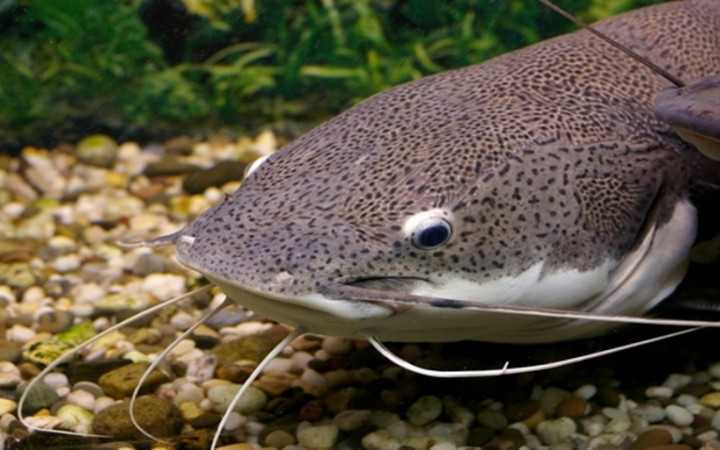Today’s Wonder of the Day was inspired by elijah. elijah Wonders, “Why do catfish have wisckers” Thanks for WONDERing with us, elijah!
Have you ever spent a summer day on or in a sparkling lake? Whether you’ve visited one of the Great Lakes or smaller local ponds, you know there’s plenty of fun to be had on these bodies of water. People enjoy swimming, boating, fishing, and many other activities in the world’s lakes.
Of course, lakes aren’t just fun places to visit. They’re also home to many plants and animals. Can you think of any creatures that call a lake home? Your mind might jump to ducks, frogs, or even alligators! Of course, lakes can also be full of many types of fish—including one that’s named after certain furry felines that many people keep as pets. What are we talking about? The catfish, of course!
Have you ever seen a catfish? If so, you might already know where its name came from. Long, thin tendrils protrude from around their mouths. These look a lot like whiskers! However, catfish don’t have whiskers of hair like cats and dogs. Instead, these special whisker-like feelers are made of skin. They’re called “.”
How do catfish use their ? Each one is loaded with tiny taste buds and special olfactory sensors. These help the fish taste and smell. Catfish tend to live in dark, murky waters where their vision isn’t very useful. help the fish search out food using their senses of touch and taste.
Barbel whiskers are only part of where the catfish got its name. When caught, they make a noise that sounds a bit like a cat purring. However, this may be where the similarities between catfish and cats end. Catfish can easily grow to become much larger than a cat—and sometimes even larger than a kid!
In fact, the largest catfish ever caught was about the size of a grizzly bear. Captured in Thailand’s Mekong River, the fish weighed in at 646 pounds. On top of being the largest catfish, it is also currently the largest freshwater fish on record.
Do catfish live in waterways near you? It’s likely! There are over 3,000 species of the animal, and they live on every continent except Antarctica. The next time you spend time near a lake or river, take a peek below the surface—you just may see a pair of “whiskers” swimming by!
Standards: NGSS.LS1.A, CCRA.L.3, CCRA.L.6, CCRA.R.1, CCRA.R.2, CCRA.R.4, CCRA.R.10, CCRA.SL.1, CCRA.SL.2, CCRA.W.2, CCRA.W.4, CCRA.W.9, CCRA.W.10, CCRA.L.1, CCRA.L.2, CCRA.W.7




